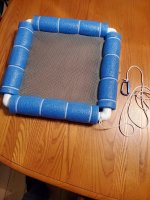Whiterook
Jr. Member
- Apr 13, 2015
- 26
- 12
- Detector(s) used
- Minelab Equinox 800
Garrett AT Pro
Gold Bug II
Minelab GPX 4800
Garrett GTAx750
- Primary Interest:
- Metal Detecting
I detected today in a local lake with a clay bottom. Unlike sand that flows out the holes in the scoop, the clay just clumped together regardless of all the shaking or draining or anything else. After picking up 15 lbs of clay in each scoop for 4 hours, my arms were dead. Does anyone have any secrets to hunting in a lake with a clay bottom? Maybe a secondary floating filter screen to dump the scoop into? Any ideas? Many thanks!!
Amazon Forum Fav 👍
Upvote
1








